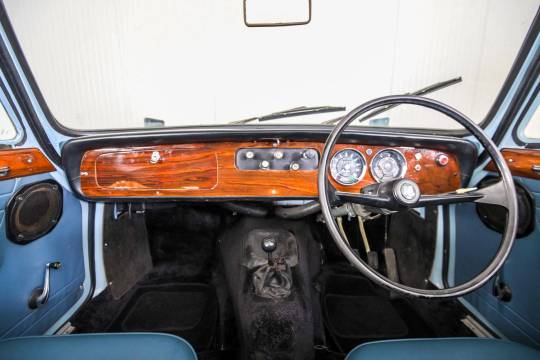#Triumph Herald 13/60
Text

Triumph Herald 13/60
#Triumph Herald#Triumph Herald 13/60#British#English#England#UK#Classic Cars#Vintage Cars#Cool Cars#Old Cars#Oldtimer#Cars#Autos#Motors#Culture#Style
108 notes
·
View notes
Text



1967 Triumph Herald 13/60 Convertible
My tumblr-blogs: https://www.tumblr.com/blog/germancarssince1946 & https://www.tumblr.com/blog/frenchcarssince1946 & https://www.tumblr.com/blog/englishcarssince1946 & https://www.tumblr.com/blog/italiancarssince1946 & https://www.tumblr.com/blog/japanesecarssince1947
7 notes
·
View notes
Photo










Triumph GT6 MK3
The final major facelift for the GT6 came in 1970 in the form of the Mk III. This time the entire bodyshell was revised to match the changes made to the Spitfire Mk IV: modifications included a cut-off rear end, recessed door handles and a smoother front end. Only detail changes were made to the mechanics, but in 1973 – close to the end of the car's production life – the rear suspension was changed again, this time for the cheaper (but still effective) "swing-spring" layout fitted to the Spitfire Mk IV. This was a modification of the swing axle rear suspension used on the Herald-derived models, with the transverse leaf spring mounted on a pivot, eliminating roll stiffness at the rear, and thus greatly reducing the jacking effect under cornering loads. To compensate for this loss of roll stiffness, a larger front anti-roll bar was fitted. A brake servo was also added in 1973, and seats were changed from vinyl to cloth. There was still a fairly comprehensive options list, but the knock-on wire wheels were no longer available. The unladen weight increased slightly to 2,030 lb (920 kg).[1]Engine power and torque for the Mk III was similar to the Mk II, but better aerodynamics led to a new top speed of 112 mph (180 km/h) and a 0–60 mph (0–97 km/h) time of 10.1 seconds. Performance was now comfortably ahead of the MGB GT, which reached about 105 mph (169 km/h) and 0–60 mph (0–97 km/h) in approximately 13 seconds. Fuel economy was also improved to 28 mpg‑imp (10 L/100 km; 23 mpg‑US). The last USA models performed relatively poorly, owing to the compression ratios being reduced to allow the use of lower octane unleaded gasoline.The Mk III never sold in the numbers hoped for by Triumph, and was comprehensively beaten in the marketplace by the MGB. Triumph refused to release an official convertible version of the GT6 and, after poor sales, it was dropped from the Triumph range at the end of 1973, although a few cars were sold the following year.
35 notes
·
View notes
Text
Manuel d'atelier triumph spitfire mk3
MANUEL D'ATELIER TRIUMPH SPITFIRE MK3 >> Telecharger
vk.cc/c7jKeU
MANUEL D'ATELIER TRIUMPH SPITFIRE MK3 >> Lire en ligne
bit.do/fSmfG
manuel spitfire mk lv
spitfire association
code peinture triumph spitfire
amicale spitfire annonce
diagnospit
association triumphamicale spitfire forum
triumph spitfire france
Triumph Spitfire MK1, MK2 and MK3, Herald 1200, 12/50 and 13/60, Vitesse. Werkstatthandbuch Workshop Manual Manuel d'atelier Werkplaats Ha. TRIUMPH. HERALD 1200, 12/50, VITESSE. ET. SPITFIRE. MANUEL D'ATELIER Ce manuel d'atelier, qui se compose de feuilles détachées, a été compilé à Manuel atelier Triumph Spitfire, en Anglais. Manuels d'atelier édition Triumph en français pour Spitfire HeralD Gt6 et Vitesse regroupés sur un CD imprimable ou en téléchargement 1er volume. Ce manuel d'atelier appelé aussi manuel de réparation ou encore workshop SPITFIRE MK3 équipé avec le 1300 cm3 de janvier 1967 à à fin de fabrication. Manuel de réparation · Spitfire Mk.1,2,3 Herald 1200,13/60 Vitesse 6 · en français View our range of books & media for Triumph Spitfire. 30 article(s). Afficher Owners Handbook, Spitfire MkIII MANUEL ATELIER SPIT 1/2/3Manuel d'atelier TR en Anglais: Triumph TR2, TR3, TR3A, TR3B Triumph TR4, TR4 AIRS Manuel atelier Triumph Spitfire, en Anglais.
https://www.tumblr.com/vugekukev/697190166119448576/micro-onde-mandine-mmf25z-16-notice, https://www.tumblr.com/vugekukev/697190280161640448/performance-measurement-strategy-pdf, https://www.tumblr.com/vugekukev/697190280161640448/performance-measurement-strategy-pdf, https://www.tumblr.com/vugekukev/697190166119448576/micro-onde-mandine-mmf25z-16-notice, https://www.tumblr.com/vugekukev/697190028544196608/cross-stitch-magazines-pdf-warez.
0 notes
Text
Triumph Herald 13/60
1969 Registration doc. present.
Not roadworthy. Full restoration project or spares.
1 note
·
View note
Photo

Triumph Herald 13/60 convertible by JC_Images
3 notes
·
View notes
Text

eBay: Triumph Herald 13/60 Convertible 1971 http://rssdata.net/QzMNVn http://rssdata.net/QzMNVn
2 notes
·
View notes
Text

Triumph Herald 13/60
#Triumph#Triumph Herald 13/60#British#English#England#UK#Cars#Autos#Motors#Old Cars#Oldtimer#Classic Cars#Vintage Cars#Culture#Style
190 notes
·
View notes
Text
Christian cross
The Christian cross, seen as a representation of the instrument of the crucifixion of Jesus, is the best-known symbol of Christianity.[1] It is related to the crucifix (a cross that includes a corpus, usually a three-dimensional representation of Jesus' body) and to the more general family of cross symbols, the term cross itself being detached from the original specifically Christian meaning in modern English (as in many other western languages).
The basic forms of the cross are the Latin cross with unequal arms and the Greek cross with equal arms, besides numerous variants, partly with confessional significance, such as the tau cross, the double-barred cross, triple-barred cross, cross-and-crosslets, and many heraldic variants, such as the cross potent, cross pattée, cross moline, cross fleury, etc.
For a few centuries the emblem of Christ was a headless T-shaped Tau cross rather than a Latin cross. Elworthy considered this to originate from Pagan Druids who made Tau crosses of oak trees stripped of their branches, with two large limbs fastened at the top to represent a man's arm; this was Thau, or god.[2]
Instrument of Jesus' execution
John Pearson, Bishop of Chester (c. 1660) wrote in his commentary on the Apostles' Creed that the Greek word stauros originally signified "a straight standing Stake, Pale, or Palisador", but that, "when other transverse or prominent parts were added in a perfect Cross, it retained still the Original Name", and he declared: "The Form then of the Cross on which our Saviour suffered was not a simple, but a compounded, Figure, according to the Custom of the Romans, by whose Procurator he was condemned to die. In which there was not only a straight and erected piece of Wood fixed in the Earth, but also a transverse Beam fastened unto that towards the top thereof".[3]
Early Christian usage
There are few extant examples of the cross in 2nd century Christian iconography. It has been argued that Christians were reluctant to use it as it depicts a purposely painful and gruesome method of public execution.[1] A symbol similar to the cross, the staurogram, was used to abbreviate the Greek word for cross in very early New Testament manuscripts such as P66, P45 and P75, almost like a nomen sacrum.[4] The extensive adoption of the cross as a Christian iconographic symbol arose from the 4th century.[5]
However, the cross symbol was already associated with Christians in the 2nd century, as is indicated in the anti-Christian arguments cited in the Octavius[6] of Minucius Felix, chapters IX and XXIX, written at the end of that century or the beginning of the next,[note 2] and by the fact that by the early 3rd century the cross had become so closely associated with Christ that Clement of Alexandria, who died between 211 and 216, could without fear of ambiguity use the phrase τὸ κυριακὸν σημεῖον (the Lord's sign) to mean the cross, when he repeated the idea, current as early as the apocryphal Epistle of Barnabas, that the number 318 (in Greek numerals, ΤΙΗ) in Genesis 14:14 was interpreted as a foreshadowing (a "type") of the cross (T, an upright with crossbar, standing for 300) and of Jesus (ΙΗ, the first two letters of his name ΙΗΣΟΥΣ, standing for 18).[8] His contemporary Tertullian rejected the accusation of Christians being "adorers of the gibbet" (crucis religiosi).[note 3] In his book De Corona, written in 204, Tertullian tells how it was already a tradition for Christians to trace repeatedly on their foreheads the sign of the cross.[note 4] The crucifix, a cross upon which an image of Christ is present, is not known to have been used until the 6th century AD.[11]
The oldest extant depiction of the execution of Jesus in any medium seems to be the second-century or early third-century relief on a jasper gemstone meant for use as an amulet, which is now in the British Museum in London. It portrays a naked bearded man whose arms are tied at the wrists by short strips to the transom of a T-shaped cross. An inscription in Greek on the obverse contains an invocation of the redeeming crucified Christ. On the reverse a later inscription by a different hand combines magical formulae with Christian terms.[12] The catalogue of a 2007 exhibition says: "The appearance of the Crucifixion on a gem of such an early date suggests that pictures of the subject (now lost) may have been widespread even in the late second or early third century, most likely in conventional Christian contexts".[13][14][15]
The Jewish Encyclopedia says:[16]
The cross as a Christian symbol or "seal" came into use at least as early as the second century (see "Apost. Const." iii. 17; Epistle of Barnabas, xi.-xii.; Justin, "Apologia," i. 55-60; "Dial. cum Tryph." 85-97); and the marking of a cross upon the forehead and the chest was regarded as a talisman against the powers of demons (Tertullian, "De Corona," iii.; Cyprian, "Testimonies," xi. 21–22; Lactantius, "Divinæ Institutiones," iv. 27, and elsewhere). Accordingly the Christian Fathers had to defend themselves, as early as the second century, against the charge of being worshipers of the cross, as may be learned from Tertullian, "Apologia," xii., xvii., and Minucius Felix, "Octavius," xxix. Christians used to swear by the power of the cross
In contemporary Christianity
In Christianity, communicants of the Oriental Orthodox and Eastern Orthodox Churches are expected to wear a cross necklace at all times; these are ordinarily given to believers at their baptism.[17][18]
Many Christians, such as those in the tradition of the Church of the East, continue the practice of hanging a Christian cross in their homes, often on the east wall.[19][20][21] Crosses or crucifixes are often the centre of a Christian family's home altar as well.[22]
Catholics, Orthodox Catholic, Oriental Orthodox, members of the major branches of Christianity with other adherents as Lutheranism and Anglicans, and others often make the Sign of the Cross upon themselves. This was already a common Christian practice in the time of Tertullian.[note 4]
The Feast of the Cross is an important Christian feast. One of the twelve Great Feasts in Orthodox Catholic is the Exaltation of the Cross on September 14, which commemorates the consecration of the basilica on the site where the original cross of Jesus was reportedly discovered in 326 by Helena of Constantinople, mother of Constantine the Great. The Catholic Church celebrates the feast on the same day and under the same name (In Exaltatione Sanctae Crucis), though in English it has been called the feast of the Triumph of the Cross.
Roman Catholic, Eastern Orthodox and Anglican bishops place a cross [+] before their name when signing a document. The dagger symbol (†) placed after the name of a dead person (often with the date of death) is sometimes taken to be a Christian cross.[23]
In many Christian traditions, such as the Methodist Churches, the altar cross sits atop or is suspended above the altar table and is a focal point of the chancel.[24]
In many Baptist churches, a large cross hangs above the baptistry.[25]
Rejection among various religious groups
Although Christians accepted that the cross was the gallows on which Jesus died,[note 5] they had already begun in the 2nd century to use it as a Christian symbol.[note 6] During the first three centuries of the Christian era the cross was "a symbol of minor importance" when compared to the prominence given to it later,[28] but by the second century it was closely associated with Christians, to the point where Christians were mocked as "adorers of the gibbet" (crucis religiosi), an accusation countered by Tertullian.[note 3] and it was already a tradition for Christians to trace repeatedly on their foreheads the sign of the cross.[note 4] Martin Luther at the time of the Reformation retained the cross and crucifix in the Lutheran Church,[note 7] which remains an important feature of Lutheran devotion and worship today.[30][31] Luther wrote: Crux sola est nostra theologia, "The cross alone is our theology."[32]
On the other hand, the Great Iconoclasm was a wave of rejecting sacred images among Calvinists of the 16th century.[note 8] Some localities (such as England) included polemics against using the cross in worship. For example, during the 16th century, a minority of theologians in the Anglican and Reformed traditions Nicholas Ridley,[34] James Calfhill,[35] and Theodore Beza,[36] rejected practices that they described as cross worship. Considering it a form of idolatry, there was a dispute in 16th century England over the baptismal use of the sign of the cross and even the public use of crosses.[37] There were more active reactions to religious items that were thought as 'relics of Papacy', as happened for example in September 1641, when Sir Robert Harley pulled down and destroyed the cross at Wigmore.[38] Writers during the 19th century indicating a Pagan origin of the cross included Henry Dana Ward,[39] Mourant Brock,[40] and John Denham Parsons.[41] David Williams, writing of medieval images of monsters, says: "The disembodied phallus is also formed into a cross, which, before it became for Christianity the symbol of salvation, was a pagan symbol of fertility."[42] The study, Gods, Heroes & Kings: The Battle for Mythic Britain states: "Before the fourth century CE, the cross was not widely embraced as a sign of Christianity, symbolizing as it did the gallows of a criminal."[43] This reaction in the Anglican and other Reformed Churches was short-lived and the cross became ubiquitous in these Christian traditions.[44]
Jehovah's Witnesses do not use the symbol of the cross in their worship, which they believe constitutes idolatry.[45] They believe that Jesus died on a single upright torture stake rather than a two-beam cross, arguing that the Greek term stauros indicated a single upright pole.[46] Although early Watch Tower Society publications associated with the Bible Student movement taught that Christ was executed on a cross, it no longer appeared on Watch Tower Society publications after the name Jehovah's witnesses was adopted in 1931,[47] and use of the cross was officially abandoned in 1936.[48]
The Church of Jesus Christ of Latter-day Saints teaches that Jesus died on a cross; however, their prophet Gordon B. Hinckley stated that "for us the cross is the symbol of the dying Christ, while our message is a declaration of the living Christ." When asked what was the symbol of his religion, Hinckley replied "the lives of our people must become the only meaningful expression of our faith and, in fact, therefore, the symbol of our worship."[49][50] Prophet Howard W. Hunter encouraged Latter-day Saints "to look to the temple of the Lord as the great symbol of your membership."[51] Images of LDS temples and the Angel Moroni (who is found in statue on most temples) are commonly used to symbolize the faith of members of the Church of Jesus Christ of Latter Day Saints.[52] In April 2020, under President Russell M. Nelson, the Church formally adopted an image inspired by Thorvaldsen's Christus statue underlain with the Church's name as an official symbol of the faith.[53]
0 notes
Text



1967 Triumph Herald 13/60 Sedan
My tumblr-blogs: https://www.tumblr.com/blog/germancarssince1946 & https://www.tumblr.com/blog/frenchcarssince1946 & https://www.tumblr.com/blog/englishcarssince1946 & https://www.tumblr.com/blog/italiancarssince1946 & https://www.tumblr.com/blog/japanesecarssince1947
7 notes
·
View notes
Text
The Clash's 40 greatest songs – ranked! | Music | The Guardian

A historical artefact, not for the proto-punk music, but because the lyrics epitomise the new wave’s perceived threat to the old guard. “No Elvis, Beatles or the Rolling Stones / In 1977,” sang Joe Strummer, hardly about to let his love of such pop greats get in the way of punk’s declaration of year zero.
39. White Riot (1977)
Guitarist Mick Jones now dislikes the first Clash single, its lyrics written by Strummer after the band were caught up in the 1976 Notting Hill riots and he concluded white people needed “a riot of our own”. The sentiment hasn’t aged well, but the song exemplifies the amphetamine-fuelled punk the band would leave behind.
38. What’s My Name (1977)
A Clash curio in that it’s the only one of the group’s songs to bear a writing credit for Keith Levene, the band’s original guitarist. Levene showers melodic gold dust all over this otherwise shouty punk stomper, but is better known for his work with John Lydon in Public Image Ltd.
37. Know Your Rights (1982)
From Combat Rock, the final album by the classic quartet of Strummer, Jones, bassist Paul Simonon and drummer Topper Headon. The tank was getting emptied, but Strummer’s black humour brims through lines such as “You have the right to free speech / As long as you’re not dumb enough to actually try it.”
36. I’m So Bored With the USA (1977)
This hugely anthemic track on debut album The Clash began life as I’m So Bored With You, a song about Jones’s girlfriend, before Strummer’s ad-libbed “… SA” took it in a new direction. The blistering critique of US imperialism and exported culture (“Yankee detectives are always on the TV”) didn’t stop the Clash’s love of American iconography, cars and clothes.
35. Janie Jones (1977)
Original Clash drummer Terry Chimes – uncharitably credited as Tory Crimes on The Clash – propels the debut’s storming opener, a eulogy to a 60s pop celebrity and libertine who had been jailed for vice offences in 1973. On release, the convicted madam returned Strummer’s affections in the song Letter to Joe.
34. Charlie Don’t Surf (1980)
By the epic three-disc fourth album, Sandinista!, the Clash arguably had too many ideas for their own good, but within the 36-song sprawl are undoubted treasures. Titled after a Lt Col Kilgore quip in Apocalypse Now, there’s an element of the doo-wop era to this sweet song about, well, cultural imperialism.
33. Brand New Cadillac (1979)
This bracing cover of a 1959 Vince Taylor and the Playboys track refers to the early Brit rockers’ glamorous dream car (when most of them probably had to make do with a humble Ford Anglia). From the double album London Calling, the Clash’s creative zenith.
32. The Guns of Brixton (1979)
Brixton boy Simonon wanted some songwriting cash and so penned this memorable song about police harassment and discontent in his London neighbourhood, two years before the district exploded into rioting. In 1990, Simonon received an unexpected windfall when Norman Cook (later Fatboy Slim) sampled the groove for Beats International’s hit Dub Be Good to Me.
Facebook Twitter Pinterest
31. Clash City Rockers (1978)
Year zero meant many punks hurriedly buried their pasts in pub rock bands with long hair, but this 1978 single reworks a song from Strummer’s old pub rock band, the 101’ers, around trademark Clash self-mythology. The shift from aggressive guitars (surely copied from the Who’s I Can’t Explain) to something more mournful suggest musical adventure to come.
30. Rudie Can’t Fail (1979)
According to long-time Clash associate Don Letts, this London Calling gem is the fruit of a long hot summer that the Clash spent smoking herb and going to reggae clubs. It’s a horns-drenched homage to Caribbean culture, “drinking brew for breakfast” and the “chicken skin suit”.
29. Tommy Gun (1978)
A great single from the not universally adored second album, Give ’Em Enough Rope. Strummer is scathing about the idea that terrorists see their cause as glamorous, yelling: “You’ll be dead when your war is won”, while Headon’s snare drum rolls resemble gunfire. This didn’t stop the singer posing for photos in a T-shirt honouring Italian-based violent leftist organisation Brigate Rosse (the Red Brigades).
28. Police and Thieves (1977)
This cover of the Lee Scratch Perry-produced Junior Murvin hit stands out a mile on The Clash. It’s their first attempt at reggae, played punkier, with a new, Jones-penned intro. That summer, Bob Marley (working with Perry) acknowledged the burgeoning punk/Jamaican music love-in with Punky Reggae Party.
27. London’s Burning (1977)
Also from the debut album, this most captures those punk rock summers of 1976 and 1977, with its bone-crunching verse and rabble-rousing chorus. The imagery is a comprehensive list of the band and movement’s inspirations, from high-rise living above the Westway (where Jones lived with his gran) to a capital city “burning with boredom now”.
26. Somebody Got Murdered (1980)
According to Pat Gilbert’s superb book Passion Is a Fashion, the Clash were approached by producer-arranger Jack Nitzsche to provide a song for the William Friedkin movie Cruising, but he never called again. Thus, the song lit up Sandinista! with its effervescent tune and film noir-ish imagery about a random killing.
25. Career Opportunities (1977)
The limited youth employment of the 70s is timelessly skewered (“Career opportunities, the ones that never knock”) in this gem from the debut. The line “I won’t open letter bombs for you” refers to an actual job once held by Jones, checking government mail for explosive devices.
24. Pressure Drop (1979)
The B-side of the slightly hackneyed English Civil War and one of the Clash’s great covers, of Toots and the Maytals’ 1970 reggae/ska classic (as heard in the 1972 film The Harder They Come). Later, Strummer was at pains to point out that they recorded it in 1977, hence it pre-dates 2-Tone.
23. This Is England (1985)
Headon and Jones had been sacked by now (for heroin abuse and behavioural issues, respectively) as a remodelled, five-piece Clash made a sixth album. The otherwise unloved Cut the Crap did herald this final terrific single. Keyboards and guitars drive Strummer’s withering take on our national strife.
Facebook Twitter Pinterest
22. Gates of the West (1979)
The Clash had been singing about the US since I’m So Bored With the USA. Based on Rusted Chrome, an early Jones composition, this stormer from the Cost of Living EP describes their New York experiences, the characters, imagery and anthemic tune all reminiscent of Bruce Springsteen.
21. Hitsville UK (1980)
From Sandinista!, this eulogy to pop is a bubblegum delight that namechecks the UK’s emerging independent labels and argues that a great “two minutes 59” single can triumph over industry sharp practice. With its Motown (the original “Hitsville”) groove and sugar-coated duet between Jones and his girlfriend, Ellen Foley, the Clash’s remaining hardcore punk fans hated it.
20. Police on My Back (1980)
Another terrific example of the Clash’s ability to cover a song (the original was by Eddy Grant’s old band, the Equals) and make it sound as if they had written it. Jones’s guitar wails like a siren, and the song has all the adrenalin rush of a police chase.
19. Lost in the Supermarket (1979)
In the tradition of the Rolling Stones’ (I Can’t Get No) Satisfaction and the X-Ray Spex back catalogue, this is a great Strummer-penned/Jones-sung song about the dehumanising effects of advertising and the consumer society. (“I came in here for that special offer / A guaranteed personality.”)
18. I Fought the Law (1979)
The band reputedly heard the Bobby Fuller Four original on the studio jukebox in San Francisco while recording Give ’Em Enough Rope. Writing credits aside, this is a trademark Clash smash, full of outlaw rebel posturing and laden with Headon’s six-shooter drum cracks.
17. Death or Glory (1979)
Strummer’s ferocious blast at ageing, sellout rock stars builds to a hurtling climax on a lyrical twist as he fears a similar fate himself. Presumably it was ruled out as a single because of the infamous, hilarious line: “But I believe in this and it’s been tested by research / He who fucks nuns will later join the church.”
16. Safe European Home (1978)
Strutting around Kingston, Jamaica, in full punk regalia (in theory to stir the creative juices for Give ’Em Enough Rope) proved a rude awakening, but did produce this untypical example of Clash self-mockery. “I went to the place where every white face / Is an invitation to robbery / And sitting here in my safe European home / Don’t want to go back there again.”
15. Clampdown (1979)
Strummer’s view that capitalism was endangering people and the planet was sharpened by the Three Mile Island nuclear accident, which inspired this London Calling highlight. The Clash were exploding with musical ideas by now, and packed rock, funk and disco into this fiery, timeless anthem.
14. Garageland (1977)
The rock critic Charles Shaar Murray’s dismissal of the Clash as a “garage band” in an early live review prompted this defiant riposte, which also reflects the band’s fretting that signing to a major label would be selling out. It’s a furious but somehow melancholy anthem: “People ringing up making offers for my life / But I just wanna stay in the garage all night.”
13. The Card Cheat (1979)
Surely channeling Jones’s love of Mott the Hoople, this is the sort of thing that presumably inspired the Libertines. Horns, drum rudiments, a sublime piano hook and vivid imagery (“To the opium dens and the bar room gin ... The gambler’s face cracks into a grin”) combine in a song about a card sharp who is shot for cheating.
12. Spanish Bombs (1979)
A favourite of the late INXS singer, Michael Hutchence. The melody is glorious and Strummer’s lyrics contrast the freedom fighters of the Spanish civil war with modern tourists. The singer partly sings it in what he called “Clash Spanish”. Olé!
11. Rock the Casbah (1982)
Headon wrote and played most of the music on Combat Rock’s club/chart smash, which innovatively combines rock, funk and a slightly eastern feel. Strummer’s lyrics are inspired by Iran’s post-Islamic revolution ban on pop music, the singer’s idea being that the people would rise up and “rock the casbah”.
Facebook Twitter Pinterest
10. Train in Vain (1979)
After a planned NME flexidisc fell through, this sublime Jones unrequited love song was added to London Calling too late for listing on the initial sleeves. Pete Townshend’s favourite Clash tune, this is the band at their unashamedly poppiest. Headon’s killer drum intro fires one of the rhythm section’s funkiest grooves.
9. Stay Free (1978)
Jones’s sublime, heartfelt eulogy to his old Strand school friend Robin Crocker, who became known as Robin Banks after a sting of heists landed him a stretch inside. Some fans were delighted to discover that Banks subsequently punched the song’s producer, Sandy Pearlman, who had previously worked with Blue Öyster Cult and is largely blamed for Give ’Em Enough Rope’s not exactly punky gloss.
8. The Magnificent Seven (1980)
Having rattled through punk, reggae, ska, dub and rockabilly inside five years, our boys assimilate the emerging hip-hop sounds they heard while in New York, and Strummer turns white rap pioneer. A terrific groove forms the platform for daft-but-inspired wordplay: “Italian mobster shoots a lobster.”
7. The Call Up (1980)
Following the Russian invasion of Afghanistan, as the US geared up to reintroduce the draft, the Clash spearheaded the resistance with this fantastic Sandinista! single. “It’s up to you not to heed the call up / I don’t wanna die ... I don’t wanna kill,” cries Strummer, over a magnificently eerie reggae-ish backdrop.
6. Bankrobber (1980)
So many great songs poured out of the Clash that this Mikey Dread-produced gem was almost thrown away as an import-only 45, which didn’t stop it making it No 12 in the UK charts. It’s dub music with folk storytelling – Strummer’s “daddy” wasn’t really a bank robber, but a diplomat.
5. London Calling (1979)
The Clash’s highest-charting UK single, until Combat Rock’s rather banal Should I Stay Or Should I Go reached No 1 in 1991 after being used in a Levi’s ad. Years before the climate crisis and flooding sparked public concern, Strummer fears an imminent biblical apocalypse, hence “London is drowning and I live by the river”.
4. Armagideon Time (1979)
The flip of the London Calling single, this superb reworking of Willie Williams’ social justice anthem is the definitive example of the Clash playing reggae. Strummer’s “OK, OK, don’t push us when we’re hot” is his shouted rebuff to then-manager Kosmo Vinyl, urging him to scrap the allotted three-minute length and keep the tapes rolling.
3. Complete Control (1977)
After CBS infuriated the Clash by releasing Remote Control as a single against their wishes, the band responded with their punk-era high watermark. Lee Perry produces, and Strummer’s yelled “You’re my guitar hero!” during Jones’s blistering guitar solo is one of many goosebump moments.
2. Straight to Hell (1982)
Headon’s bossa nova rhythm and a haunting hook (later sampled by MIA for 2007’s Paper Planes) power Combat Rock’s finest. The band’s unity was already fracturing, but Strummer rightly called this vengeful tirade against imperialism and American soldiers in Vietnam who left local women pregnant (“Go straight to hell, boys”) “one of our absolute masterpieces”.
1. (White Man in) Hammersmith Palais (1978)
Any of the Clash’s best songs could grace the top spot without too much argument, but this edges it. The collision of reggae (verse) and rock (chorus) epitomise what the critic Lester Bangs described as the Clash’s fusion of “black music and white noise”. Lyrically, a disappointingly lightweight reggae gig (in the Hammersmith Palais) triggers Strummer’s blistering state of the nation address, in which he considers everything from music (“Turning rebellion into money”) to racism and rising nationalism (“If Adolf Hitler flew in today, they’d send a limousine anyway”). Forty-two years on, it remains a tour de force and as relevant as ever.
Various 40th anniversary super deluxe editions of London Calling are out now on Sony.
This content was originally published here.
0 notes
Photo

Newly arrived Triumph Herald 13/60 convertible in for inspection – trailered here but it’ll go home a runner. Job list includes full carb rebuild, electronic ignition and Revotec fan kit, plus some minor cosmetics. 💪 #triumphcars #classiccars #britishclassic #carrestoration #carsofinstagram #revotec https://www.instagram.com/p/BzxqvIVFdvv/?igshid=qlncx6904e8t
0 notes
Photo

Starring: ‘68 Triumph Herald 13/60 Convertible
By Steve Glover
46 notes
·
View notes
Photo

eBay:: 1969 Triumph Herald 13/60 with overdrive. Wedgewood Blue http://rssdata.net/QsVxS3
1 note
·
View note






